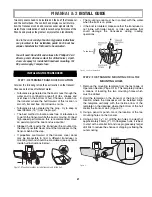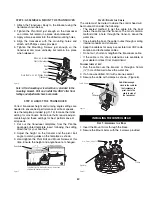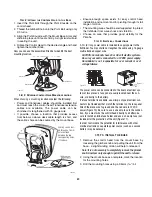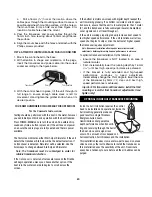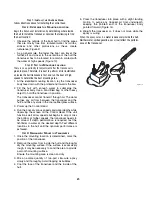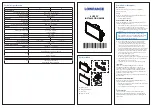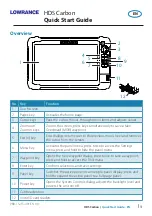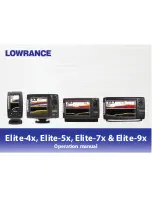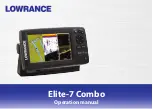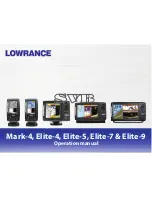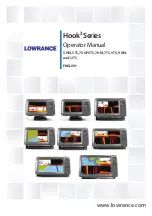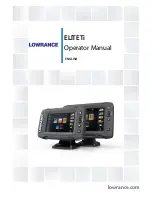
I-5
S
TEP
1: I
NSTALL THE
C
ONTROL
H
EAD
F
ollow directions above for installing the control head.
S
TEP
2: D
ETERMINE THE
M
OUNTING
L
OCATION
Begin the transducer installa
tion by determining where inside
the hull to install the transducer. Consider the following to find
the best location:
•
Observe the outside of the boat hull to find the areas
that are mostly free from turbulent water. Avoid ribs,
strakes and other protrusions as these create
turbulence (Figure 2).
•
As a general rule, the faster the boat can travel, the
further aft and closer to the centerline of the hull the
transducer has to be located to remain in contact with
the water at high speeds (Figure 13).
S
TEP
3: T
EST THE
M
OUNTING
L
OCATION
There is no opportunity for adjustment after the transducer is
glued in place. Therefore, it is best to perform a trial installation
on inside the hull transducers first, and run the boat at high
speeds to determine the best mounting area.
1.
At the identified mounting location, lay the transducer
body face down with the pointed end towards the bow.
2. Fill the hull with enough water to submerge the
transducer body. Use a sand filled bag or other heavy
object to hold the transducer in position.
The transducer cannot transmit through air. The water
purges any air from between the transducer and the
hull, and fills any voids in the coarse fiberglass surface.
3. Power up the Control Head.
4. Run the boat at various speeds and water depths while
observing the screen on the Control Head. If the unit
functions well at low speeds but begins to skip or miss
the bottom at higher speeds, the transducer needs to
be moved. If depth performance is required, test the
fishfinder in water at the desired depth. Test different
locations in the hull until the optimum performance is
achieved.
S
TEP
4: P
ERMANENTLY
M
OUNT THE
T
RANSDUCER
1.
Once the mounting location is determined, mark the
position of the transducer.
2. Remove the water from inside the hull and thoroughly
dry the mounting surface. If the surface is excessively
rough, it may be necessary to sand the area to provide
a smooth mounting surface.
Ensure the mounting area is clean and dry.
3. Mix an ample quantity of two-part slow-cure epoxy
slowly and thoroughly. Avoid trapping air bubbles.
4. Coat the face of the transducer and the inside of the
hull.
5. Press the transducer into place with a slight twisting
motion to purge any trapped air from underneath,
keeping the pointed end of the transducer body
pointed forward (Figure 14).
6. Weight the transducer so it does not move while the
epoxy is curing.
When the epoxy cures,
no water is necessary inside the hull.
Neither water, spilled gasoline, nor oil will affect the perform-
ance of the transducer.
Figure 14

